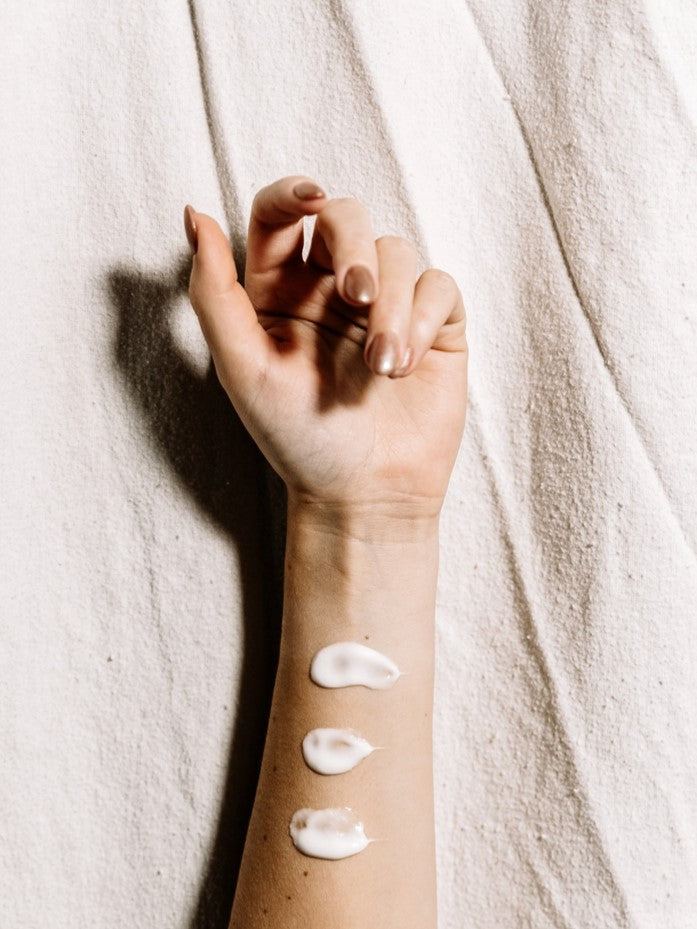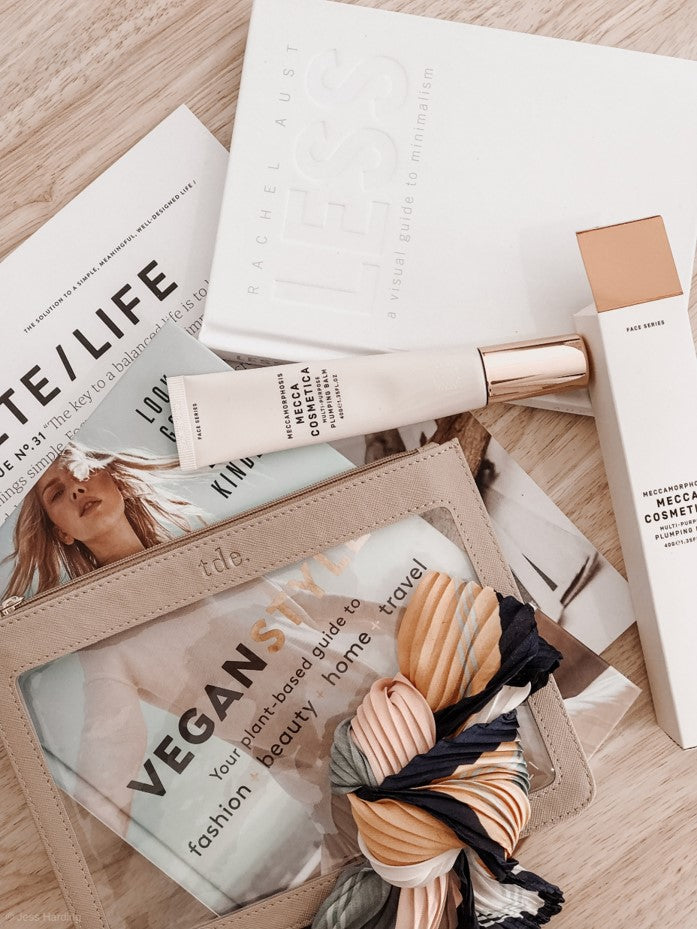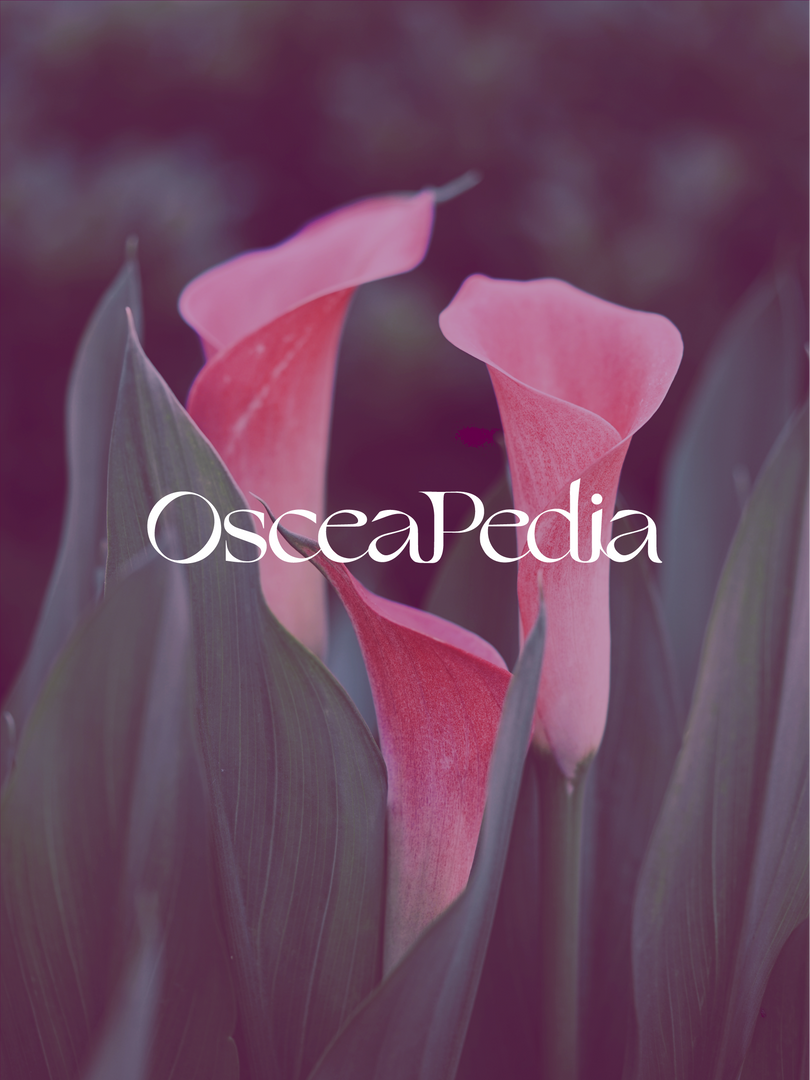Sunscreen has been in the news a lot lately. Researchers, policy makers, and consumers are uncovering the toxic chemicals lurking in our sunscreen. Recent findings call for new sunscreen safety guidelines but in the meantime, purchasing non toxic sunscreen is the best option.
This article will cover:
- What is the problem with conventional sunscreen?
- How is sunscreen killing the coral reefs?
- What is going on with new FDA regulations on sunscreen?
- Toxic Ingredients in Sunscreen to Avoid
- What is non toxic mineral sunscreen?
- 5 Best Non Toxic Sunscreens
What is the problem with conventional sunscreen?
It is important to use sunscreen to protect your skin from UV rays and prevent sunburns and skin cancer. There is a lot of confusion about how chemical sunscreens work and what ingredients are safe. Chemical sunscreens work like a sponge. The active ingredients penetrate our skin and absorb the sun's rays. New research is finding that since these chemicals actually penetrate the skin, they absorb into the bloodstream after just one use. Sunscreen ingredients have been detected in blood, skin, urine and even breast milk. This is concerning since sunscreen is intended to be applied to the body every day for a lifetime. Facial sunscreen is even more important for your daily routine but research has found that chemicals in facial sunscreen absorb into the skin four times faster. Spray sunscreens are concerning since you can easily inhale or ingest the ingredients. The chemicals used in spray sunscreen should not be harmful to lungs or internal organs but they are not. Exposure to sunscreen chemicals is linked to neurotoxicity, reproductive problems, fetal development, reduced fertility and other health concerns. Research has found that participants' chemical blood concentrations after sunscreen use, far exceeded the FDA’s allowable safety standards for non toxic substances.
How is sunscreen killing the coral reefs?
Chemicals used in sunscreen not only threaten human health, but also threaten marine life. Coral reefs are one of the most valuable ecosystems on earth. They are an important source of food, coastal protection and tourism. But the coral reefs are threatened and dying. They are going extinct due to a number of reasons including, climate change, unsustainable fishing, land based pollution, coastal development, disease and invasive species and the toxic chemical residue from our sunscreen. When we swim or shower, sunscreen washes off and enters waterways. Just a small amount of these chemicals is enough to break down coral, cause it to lose its nutrients, turn ghostly white and die. According to the National Park Service, 4,000 to 6,000 tons of sunscreen enter reef areas annually. The places with the heaviest tourism, have had the most severe coral reef damage. Countries are beginning to research and ban ingredients that are toxic to coral reefs. Hawaii and the city of Key West have already banned the sale of sunscreens that contain oxybenzone or octinoxate. Chemical sunscreen has a variety of harsh impacts on marine life. Chemicals in sunscreen impair the growth of green algae, induce defects in young mussels, damage immune and reproductive systems of sea urchins, decrease fertility and reproduction in fish, and accumulate in dolphin’s tissues. In coral, the chemicals accumulate in the tissues, induce bleaching, deform the young, and result in the species death. In order to save our oceans, we need to be more mindful of the chemicals we are washing down the drain.
What’s going on with new FDA regulations on sunscreen?
The US Food and Drug Administration announced that it is updating regulatory requirements for most sunscreen products sold in the US. The FDA continues to tell Americans that they should wear sunscreen daily because of its recognized public health benefits. The FDA is currently seeking data about to what extent your skin absorbs sunscreen ingredients and whether absorbing them has any harmful effects on the body. Currently the FDA classifieds Titanium Dioxide and Zinc Oxide as safe and PABA and Trolamine Salicylate as unsafe and illegal. They are calling for research on 12 ingredients to determine if they should be banned including ensulizole, octisalate, homosalate, octocrylene, octinoxate, oxybenzone, avobenzone, Cinoxate, oxybenzone, meradimate, padimate O, and sulisobenzone. The research and proposed rule have been in effect since 2019, but the FDA still claims they need more sufficient evidence for a final order otherwise they will require additional time. Banning these substances will be a slow process. Recently, the European Commission published preliminary opinions of the safety of three ingredients: oxybenzone, homovalvate, and octocrylene. They found that the levels were not safe in the amounts at which they were currently used. The EU proposed a concentration limit of 2.2% for oxybenzone and 1.4% for homovalvate. US sunscreen manufacturers are legally allowed to use these two chemicals at concentrations up to 6 and 15%, respectively. Hundreds of sunscreens manufactured in the US use them at concentrations that far exceed the EU’s recommendations. Stricter policy on US sunscreen is necessary but these changes will be slow to take effect.
Toxic Ingredients to Avoid:
As we wait for FDA regulation, it is important to learn about the toxic chemicals in sunscreen so that you can make your own informed health decisions in the meantime. When shopping for sunscreen, check the labels for these toxic ingredients and avoid them whenever possible.
1. Oxybenzone
This chemical is widely used in sunscreen as a chemical UV blocker. It is so pervasive that the CDC found 96% of Americans have some in their system. It is detectable in the urine after just a few hours. Oxybenzone is the most worrisome ingredient in sunscreen. It is an endocrine disruptor linked to reproductive issues, skin allergies, and hormone changes. Another name for this ingredient is dihydroxy benzophenone, which has even higher associations with fertility complications. The EU found oxybenzone to be unsafe and proposed a concentration restriction and several countries have already banned this ingredient because it is harmful to aquatic life.
2. Avobenzone
This ingredient rapidly absorbs into the bloodstream and causes skin irritation. The Environmental Working Group reports that it is unsafe for those who have allergies, skin conditions, or cancer.
3. Octinoxate
Octinoxate was recently restricted in Hawaii due to its damaging impact on coral reefs. It is harmful to hormone health and is detectable in urine, blood, and even breast milk. Another name for Octinoxate to look for is Octyl methoxycinnamate. Octinoxate was found in the blood 16 times above the proposed FDA safety threshold.
4. Homovalvate
Homovalvate is a common UV blocker that is a toxic endocrine disruptor. It is not the presence itself of this ingredient that is concerning but rather how it breaks down into harmful chemical byproducts when exposed to sunlight. The EU found this ingredient unsafe and regulates its concentration.
5. Octisalate
This ingredient is another UV blocker. It worsens and causes dermatitis and allergies. Octislate doesn’t break down after entering the water supply.
6. Octocrylene
This UV blocker can cause severe allergic reactions. It can also interfere with healthy cellular signaling which can cause oxidative damage leading to cell death and possibly cancer, infections, and neurodegenerative disorders.
7. Methylisothiazolinone
This ingredient is a preservative found in sunscreen, It is considered an inactive ingredient but can make up as much as 70% of a sunscreen product. It is often labeled safe for people with sensitive skin because of its low potential for immediate reaction. But in the longer term, it is unsafe and is linked to eczema and other allergic reactions. This ingredient was even named contact allergen of the year by the American Contact Dermatitis Society.
8. Titanium Oxide
Titanium Oxide is used in mineral sunscreens and is classified as safe since few particles penetrate the skin. This ingredient is more concerning in spray formulas due to potential exposure through inhalation. The International Agency for Research on Cancer classifies it as a possible human carcinogen.
What is non toxic mineral sunscreen?
Where chemical sunscreens act like a sponge containing active ingredients that absorb the sun's rays, mineral sunscreens act like a shield sitting on the surface of the skin and deflecting the rays. The active ingredients used in mineral sunscreens are titanium dioxide and zinc oxide. Mineral sunscreen relies on naturally occurring ingredients that change the way the skin interacts with UV rays. There is no chemical reaction. Instead, these ingredients naturally protect the skin and don’t absorb into the bloodstream. Not every mineral sunscreen is better. Some mix in chemical ingredients or have inactive toxic ingredients like fragrance and preservatives. But for the most part, mineral sunscreens are the best option for non toxic sunscreen. Non nano zinc sunscreen is growing in popularity due to its safety and health benefits. Zinc oxide is a naturally occurring mineral compound and natural method of sun protection. It is the most common active ingredient in mineral sunscreen. Zinc reduces redness and inflammation and heals irritated skin. It acts as a physical barrier that reflects UV rays, like a layer of tiny mirrors. Non-nano zinc is a separate standard to differentiate from the newer nano zinc oxide which has smaller nanoparticles that can seep into the bloodstream. Nano zinc particles are smaller than 100 nanometers. This is very very small and can easily penetrate the bloodstream. Non-nano means participles are larger than 100 nanometers so they won’t penetrate the skin. Non nano zinc is safe for marine life and coral reefs. Nano zinc is easier to rub in and there is a lack of white waste associated with non-nano zinc. If you see non-nano zinc oxide as active ingredients. They also offer other products made with “clean chemicals” which have lower concentrations than conventional sunscreen. We still recommend their mineral formulas over the clean chemical ones. Their CC Screen naturally color corrects and is offered in 15 different shades. It covers imperfections yet is still lightweight. This product contains natural ingredients like apple extract, which is linked to smoother and brighter skin, and red seaweed extract, known to reduce signs of aging. Their other products include every day, spray, and lip sunscreen. Supergoop has a “no list” of ingredients they never use in any of their products which includes: oxybenzone, PABA, Anatase Titanium Dioxide, all synthetic fragrances, formaldehyde, heavy metals, talc, PEGS, parabens, phthalates, petrochemicals, cruelty-free and more. They never use any potential skin sensitizers. All of their products are EU compliant, reef safe, cruelty free, and made with environmentally friendly packaging.
Best Non Toxic Sunscreens
1. Earth Mama Organics Baby Mineral Sunscreen Lotion
SPF: 40
Price: $14.99
Earth Mama offers another great non toxic sunscreen option. The active ingredient is non-nano zinc oxide. Other natural ingredients include organic shea butter, calendula, red raspberry seed oil (which has the highest naturally occurring SPF value in the plant world),reef-safe, and pomegranate seed oil. This sunscreen is tested by pediatricians and dermatologists and is safe for the whole family. It is reef-safe and water-resistant for up to 40 minutes. Earth Mama sunscreen contains no parabens or artificial flavors. The only downside of this product is that many customers complain it’s thick and hard to dispense. Aside from ease of disposal, Earth Mama sunscreen is a great non toxic sunscreen option. They also offer a variety of other products including sunscreens, lotions, lip balms, deodorants, eczema creams, body washes, and teas.
2. Block Island Natural Mineral Sunscreen
SPF: 30
Price: $19.99
Block Island has been an EWG top pick for safe sunscreen for 7 years in a row! EWG even gave Block Island the award for best beach and sport sunscreen. Block Island’s mission is to provide safe and effective nontoxic suncare and skincare products. They offer a variety of cleansers, moisturizers, and sunscreen. Their sunscreen is lightweight, non-greasy, fragrance-free, and infused with botanical extracts. Their formula is vegan and they never test on animals. Block Island’s active ingredient is always only non-nano zinc. This product is reef safe, eco-friendly, recyclable, and biodegradable. Their formula has no parabens, gluten, PABA, sulfates, phthalates, dyes, silicone, or fragrance. This safe sunscreen is perfect for all ages and skin types and for the face and the body.
3. Soleo Organics High-Performance Natural Sunscreen
SPF: 30
Price: $21
If you're looking for an eco-friendly, organic sunscreen, Soleo Organics is the sunscreen for you. Soleo’s packaging and containers are made of 100% recyclable materials and the contents are also all 100% biodegradable. Soleo is an Australian-made and owned brand that uses only organic and natural materials. Their products are always free of synthetic chemicals, preservatives, titanium dioxide, parabens, PABA, petrochemicals, synthetic fragrances, and colors. This sunscreen is suitable for babies, children, pregnant women, and individuals with sensitive skin. Their hypoallergenic, cruelty-free, and reef-friendly formula uses zinc oxide as the active ingredient in combination with botanical extracts and antioxidants. This sunscreen offers 3 hours of water resistance! They offer unscented and scented sunscreens. For instance, the scented coconut sunscreen smells delicious and is naturally derived from coconuts. Soleo Organics was rated the top natural sunscreen by both the Washington Post and Elle Magazine.
4. Love Sun Body Glow Natural Tinted Mineral Sunscreen and Moisturizer
SPF:30
Price: $35
Love Sun Body is America’s first 100% natural mineral sunscreen and tinted moisturizer. Their anti-aging BB cream is what they are known for. This tinted moisturizer contains SPF and is offered in four shades to blend with a variety of skin tones. Their formula is a combination of 20% non-nano zinc oxide and other hydrating, naturally derived materials like raspberry seed oil, sunflower oil, jojoba oil, vitamin C, and vitamin E. This formula meets FDA and EU standards. Love Sun Body’s formula is also hypoallergenic, vegan, cruelty-free, and reef safe. Their products contain no GMOs or synthetic ingredients. PEGS, parabens, silicone, synthetic perfumes and dyes, petroleum, gluten, phthalates and more synthetic ingredients are never used in Love Sun Body products. Aside from tinted moisturizer, they also offer mineral sunscreen, fragrance-free or naturally scented sunscreens, and face sunscreen.
Sources:
https://www.ncbi.nlm.nih.gov/pmc/articles/PMC1661631/
https://blog.paleohacks.com/sunscreen/#
https://www.aad.org/public/everyday-care/sun-protection/sunscreen-patients/is-sunscreen-safe
https://www.fda.gov/drugs/news-events-human-drugs/update-sunscreen-requirements-deemed-final-order-and-proposed-order https://www.ewg.org/sunscreen/report/the-trouble-with-sunscreen-chemicals/
https://oceanservice.noaa.gov/news/sunscreen-corals.html
https://www.treehugger.com/best-mineral-sunscreens-5075014










